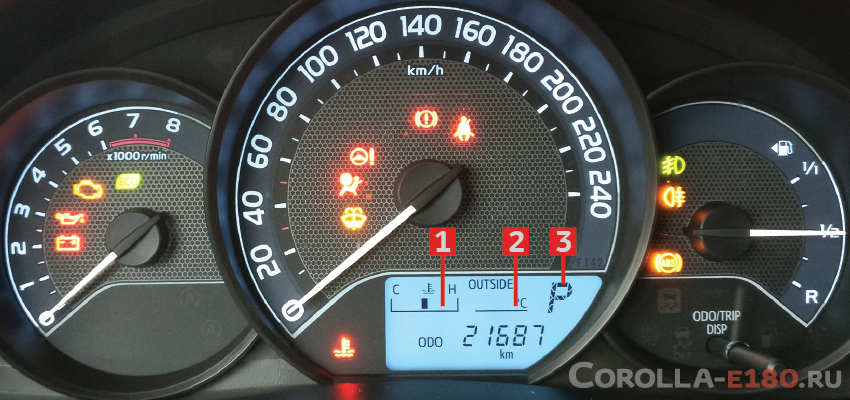I’m borrowing a friend’s car and a warning light came on the dash. I think it’s a tire pressure light. How do I check the tire pressure on a Toyota Corolla 2022?
Bonnie Stinson · Answered on Nov 16, 2022
Reviewed by Shannon Martin, Licensed Insurance Agent.
To check the tire pressure on a Toyota Corolla 2022, you can use a tire gauge. The proper psi is 32, depending on the tire size.
Check the glovebox to see if your friend already has a tire gauge. If so, go to one of the tires and remove the valve stem cap. Next, press the gauge onto the valve stem and read the number. Do this for all four tires.
If the air pressure is low, head to a gas station and fill up the tires. The owner’s manual should indicate the proper psi, but it’s 32 psi for most Corollas.
Do you have your own vehicle? If not, you might be interested in something called a non-owner policy. Either way, make sure you have the proper car insurance coverage and the cheapest rate. Use the free Jerry app to make sure you’re not being ripped off!
MORE: Are Toyotas expensive to maintain?
Toyota Car Tires
View full answer
WHY YOU CAN TRUST JERRY
Jerry partners with more than 50 insurance companies, but our content is independently researched, written, and fact-checked by our team of editors and agents. We aren’t paid for reviews or other content.
Browse More Content
What To Do If Your Car Is Leaking Power Steering Fluid
Pitman Arm Replacement Cost Estimate
What To Do If Your Wipers Do Not Shut Off
What To Do If Your Power Mirror Is Not Working
Driveshaft Lubrication Cost Estimate
Bmw 335 I Insurance Cost
Volvo S90 T6 Momentum Insurance Cost
Saturn Astra Xe Insurance Cost
Chevrolet Traverse Ltz Insurance Cost
Audi A5 Premium Plus 40 Insurance Cost
Sharon Car Insurance
Sandy Hook Car Insurance
Alexandria Car Insurance
Martins Ferry Car Insurance
Brookhaven Car Insurance
My car has had a hard time starting for some time now, and I'm beginning to wonder if I need a new battery. What is the Jeep OEM battery's group size?
What is the Jeep OEM battery's group size?
Claire Beaney
Sep 09, 2022
I just got a used 2018 Chevy Malibu for a great price. I’m trying to open the trunk from the inside of the car but can’t seem to find the button. Where is the trunk release on the Malibu?
Tiffany Leung
Oct 03, 2022
I was in a bit of a rush yesterday on my way to work, and I improperly passed a car, only to notice there was a cop on the side of the road. He didn’t stop me, but is improper passing considered a moving violation?
Andrea Barrett
Oct 13, 2022
Browse All Questions
The 2015 Toyota Camry has an engine oil capacity of 4.6 quarts.
Nick Kunze
Aug 09, 2022
Abandoned or improperly parked cars are subject to towing in Utah, and the process to get your car out of impound can be a little complicated.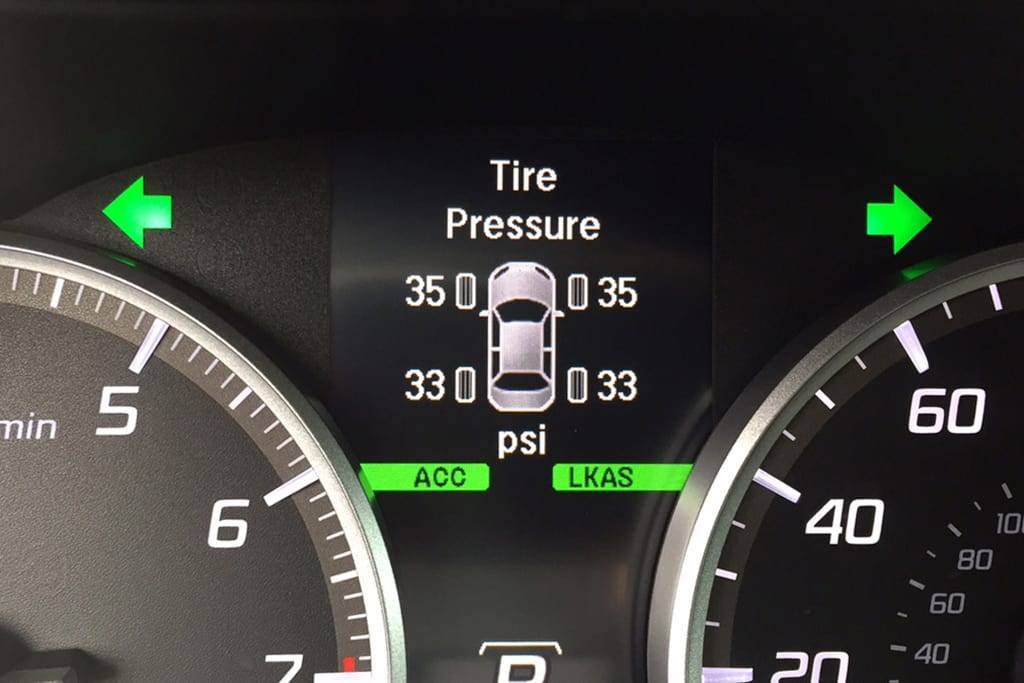
Mary Alice Morris
Aug 05, 2022
The Honda Accord may be the top dog, but competitors like the Hyundai Sonata and Toyota Camry aren’t far behind.
Macy Fouse
Aug 04, 2022
Mortgages
Mississippi
Travel
Towing
Alfa Romeo
Trailers
Rolls Royce
insurance claim
The General
Car Dealers
Backup Cameras
car engines
Auto Loan Payments
Car Repair
Hybrid Cars
Cancellation Policy
Refinancing
Driving
Luxury vehicles
Washington DC
North Dakota
Driving Tips
Truck ownership
Rivian
No long forms
No spam or unwanted phone calls
Quotes from top insurance companies
Find insurance savings — it's 100% free
Toyota
Hyundai
Mercedes-Benz
Subaru
Chevrolet
Mitsubishi
By John Goreham G+ Nov 3 2020 - 9:50am
If you have a Toyota Corolla with the tire pressure warning light on, here is what to do and why it came on.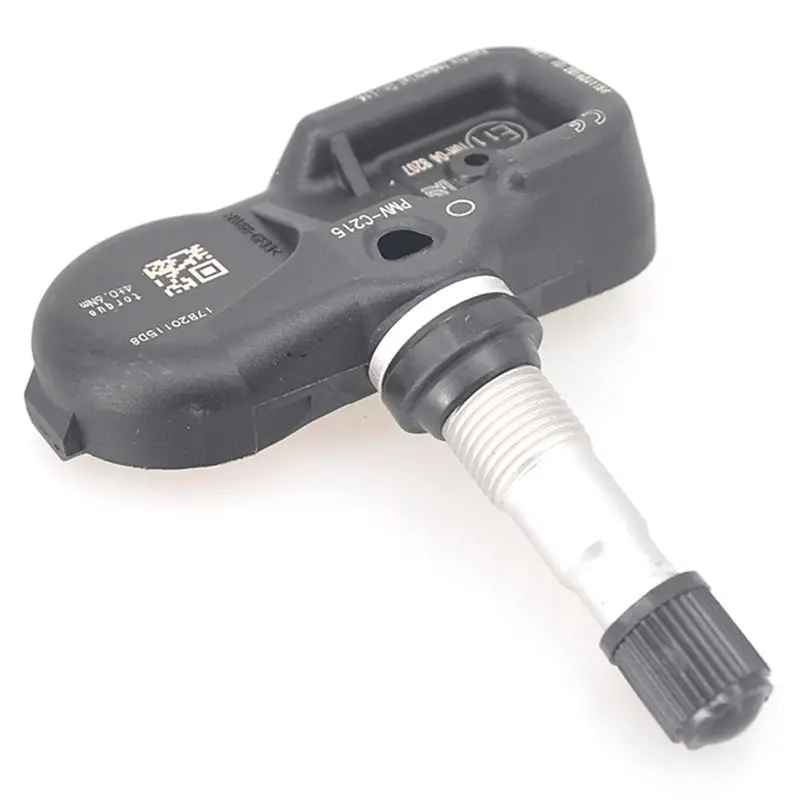
Advertisement
Tire pressure monitoring systems are mandated by law in America. This is not a feature that Toyota installs as a feature on just some Corolla trims. For more than a decade, Toyota has been installing systems and they have been driving some Corolla owners crazy. While they certainly do help let you know if a tire is deflated, in many cases, these systems can be an annoyance.
Here are the reasons that your Toyota Corolla has a “Tire Pressure Warning System” alert as Toyota calls it. We will refer to it as “TPWS” from here forward. Before we begin, if your TPWS system warning light is on now, immediately check your tire pressure. Some cars can display the tire pressure in the information display. If yours doesn’t, use a tire pressure gauge to check the pressures. The correct setpoints for your Corolla are listed on the driver’s door. Do not drive your Corolla with the TPWS light on without verifying that the tires have proper air pressure.
Corolla Tire Pressure Warning - Temperatures Have Dropped
If seasonal temperatures are dropping and your TPWS warning light is illuminated, the reason is most likely due to the temperature difference between when the pressure was last set and the current temperatures.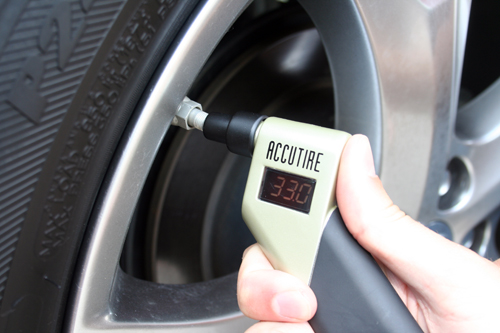 The pressure inside a tire drops with temperature. You need to reset the tire pressure in early winter and early summer. The air didn’t leak out of the tire. It simply became lower in pressure as the temperatures declined. This happens to all tires, in all vehicles, regardless of what gas is inside of them (air or nitrogen).
The pressure inside a tire drops with temperature. You need to reset the tire pressure in early winter and early summer. The air didn’t leak out of the tire. It simply became lower in pressure as the temperatures declined. This happens to all tires, in all vehicles, regardless of what gas is inside of them (air or nitrogen).
If you find that the pressure inside all of your tires is lower than the setpoint, top them off to the correct pressure. The TPWS light should go out shortly after you set the pressures to the proper level. If just one tire is lower than the rest by more than 25%, have a tire technician investigate.
Corolla Tire Pressure Warning - You Have a Flat Or More Than One Flat
The reason you have a tire pressure monitoring system in your Corolla is to detect a flat tire. Or more than one flat tire. If the light comes on while you are driving, this is the likely cause for it. Pull off the road to a safe area as quickly as you safely can and investigate. A visual inspection is not enough. Use your tire gauge to check the pressure in all four tires. If you have a flat, refer to the Corolla’s owner’s manual (see below) on what to do.
A visual inspection is not enough. Use your tire gauge to check the pressure in all four tires. If you have a flat, refer to the Corolla’s owner’s manual (see below) on what to do.
Corolla Tire Pressure Warning - TPWS System Failure
Our initial reaction when a warning light comes on is to hope it is wrong. They are sometimes. The TPWS system in your Corolla may have a problem, but it is unlikely. Yes, every person who has a problem with the tire pressure system in any car quickly goes to every Facebook forum to report it (angrily). However, the Toyota Corolla is not a vehicle that struggles with the TPWS system more so than others.
If you have verified the pressure in your tires is correct using a tire gauge, and the TPWS system is displaying a warning, ask a mechanic for help. You don’t have to go to a Toyota dealer, but if your Corolla is under the initial new vehicle warranty, that would certainly make sense.
Like any system in your Corolla, age and damage can cause a problem with the TPWS system. Individual sensors can be replaced, but the system will still need to be re-initialized. We suggest that this job is best done by a mechanic or tire professional who understands the system and can handle the work, but you can have go at it with the manual.
Individual sensors can be replaced, but the system will still need to be re-initialized. We suggest that this job is best done by a mechanic or tire professional who understands the system and can handle the work, but you can have go at it with the manual.
Corolla Tire Pressure Warning - Tire Sealants
Emergency tire sealants in a can like Fix-A -Flat, or Slime may cause your TPWS sensor to malfunction. This does not mean that the sensor is now destroyed. Here is what the Fix-A-Flat brand says about TPMS systems and its product: “Fix-a-Flat is tire sensor safe. After the qualified tire repair professional has repaired your tire, they should clean the TPMS device with water to remove any sealant that may have come into contact with the device. After the repaired tire is replaced and inflated, the TPMS system can be reset and will resume operating as normal.”
Prius Tire Pressure Warning - New Tire Or New Tires
If you buy new tires for your Corolla and immediately get a tire pressure warning light check the pressure. Mistakes happen. Flats sometimes happen driving out of a tire shop parking lot. If you have checked the pressure and it is properly set, return to the tire shop and let them know that the Corolla’s TPWS system has indicated a problem. If the shop changed the valve stems the system may need to be re-initialized.
Mistakes happen. Flats sometimes happen driving out of a tire shop parking lot. If you have checked the pressure and it is properly set, return to the tire shop and let them know that the Corolla’s TPWS system has indicated a problem. If the shop changed the valve stems the system may need to be re-initialized.
Be aware that some TPWS systems are sensitive to tire sizes. You should only use the exact size of tire your Corolla came with. If you have mounted aftermarket wheels or a different size tire, the retailer who did the work should be able to explain to you how they will resolve the TPWS system.
Corolla Tire Pressure Warning - Nitrogen Is Unnecessary
There are some dealers and shops that will suggest nitrogen as a solution to a TPWS problem in a Corolla. The claims that advocates of nitrogen for tires make are unfounded by science (the author’s degree is in mechanical engineering, ask the nitrogen seller what his technical degree is).
Furthermore, your Toyota Corolla was designed to work perfectly fine using compressed air. And it should. Does inflating an underinflated tire with nitrogen cause the TPWS light to go out? Of course, it could. Just as inflating the tire with air will do. If you wish to waste money on nitrogen, that is your call. Just know that the Corolla doesn’t need it.
And it should. Does inflating an underinflated tire with nitrogen cause the TPWS light to go out? Of course, it could. Just as inflating the tire with air will do. If you wish to waste money on nitrogen, that is your call. Just know that the Corolla doesn’t need it.
A TPWS system alert is always an annoyance, but for the most part, it is a feature that is there to help us in case a dangerous situation develops. Add air to your Corolla’s tires when temperatures begin to drop in early winter. Reset it again in early summer. These are the best two habits you can have to avoid TPWS issues.
Resources:
Find Your Corolla's Owner's Manual Here.
Corolla Tire Pressure Frequently Asked Questions:
Q: Where is the Tire Pressure Warning Switch reset button on a Corolla?
-A: On some generations, it is under the steering wheel (See top of page image). Follow the instructions in the manual to reset it.
Q: How do you reset the TPMS light on a Corolla?
-A: Use the owner's manual link at the bottom of the story to find your Corolla’s year and instructions. Follow them, but be aware that resting the system may not solve the underlying issue.
Follow them, but be aware that resting the system may not solve the underlying issue.
Q: Can the TPMS be in the Corolla turned off?
-A: The TPWS system cannot be turned off. It can be reset.
Q: Is it dangerous to drive with the tire pressure light on?
-A: Yes, driving without knowing why the light is on is dangerous until you have checked the pressure with a tire pressure gauge to verify that the pressures are correctly set.
John Goreham is a long-time New England Motor Press Association member and recovering engineer. Following his engineering program, John also completed a marketing program at Northeastern University and worked with automotive component manufacturers. In addition to Torque News, John's work has appeared in print in dozens of American newspapers and he provides reviews to many vehicle shopping sites. You can follow John on Twitter, and view his credentials at Linkedin
Hover mouse over image to see photo credits
Car Questions
Automotive News
Toyota News, Pricing and Reviews
Follow Torque News on YouTube, Twitter and Facebook.
This system is designed to alert the driver of low tire pressure. If, while driving, a pressure drop in one of the wheels is detected, the corresponding indicator lights up on the instrument cluster, indicating the need for immediate pressure adjustment.
1. How it works.
The tire pressure monitoring system (TPMS - Tire Pressure Monitoring System), used on Toyotas, refers to "indirect" action schemes and functions as part of ABS, which is able to perceive a constant difference in wheel speed (a flat tire has less rolling radius and therefore rotates slightly faster).
But such a TPMS cannot simply compare the speed of one individual wheel with the rest, since the car does not move in an absolute straight line very often, in any corners, the outer wheels will always travel more than the inner ones, and the front wheels more than the rear ones. Therefore, a conventional control system adds the speeds of each two diagonal wheels, calculates the difference between these sums, and divides it by the average speed of all four wheels. If the obtained ratio differs from the set one, then the system diagnoses the change in pressure, but it cannot identify a specific tire.
If the obtained ratio differs from the set one, then the system diagnoses the change in pressure, but it cannot identify a specific tire.
The disadvantages of this scheme are:
- impossibility to determine a sharp drop in pressure;
- the inability to determine simultaneously the pressure drop even in two wheels located on the same side or the same axle, not to mention all four wheels;
- the dependence of the system performance on the degree of wheel slip, the condition of the rubber and the vehicle load;
- actuation in case of pressure drop not less than 25-30%;
- the need for long-term calibration (pre-setting).
In this regard, Toyota used in parallel a second method of pressure control using ABS. The fact is that the tire and the rim actually represent an oscillatory circuit, the characteristics of which directly depend on the elasticity of the tire, and hence the pressure in it (meaning the circular vibrations of the tire in the direction of rotation). It turned out to be possible to isolate the frequency of these oscillations from the signal of the wheel speed sensor, and to judge the pressure drop by its change.
It turned out to be possible to isolate the frequency of these oscillations from the signal of the wheel speed sensor, and to judge the pressure drop by its change.
However, TPMS has a noticeable inertia - in order to detect a flat tire, you need to drive a considerable distance (sometimes up to 20-30 km), you will have to go a long way even after normalizing the pressure so that the indicator goes out.
2. Development.
This system was introduced by Toyota in the second half of the 1990s. As you can see, it was used mainly on models of the Corolla family and large rear-wheel drive cars, ranging from class E and above.
But it seems that the Japanese cooled off quite quickly to this scheme, so today they have abandoned its use on most models, including the Corolla 120 of the later years of production.
| Model | Series | Release |
| Corolla | #E10# | 04.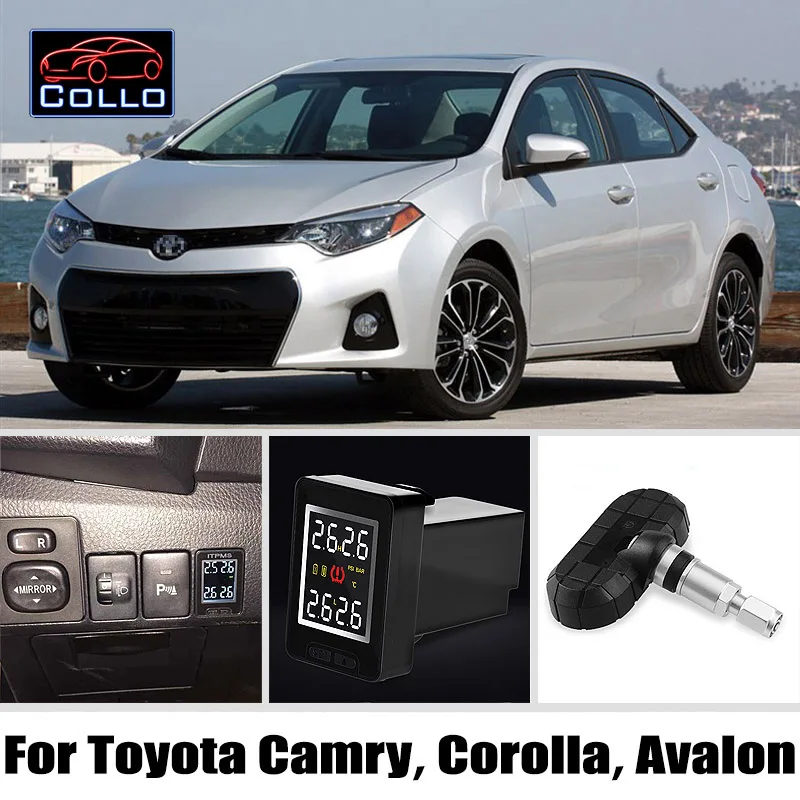 1997-04.1998 1997-04.1998 |
| Corolla/Sprinter | #E11# | 04.1997-04.1998 |
| Corolla | AE100, AE104, CE101 | 04.1998-08.2000 |
| Corolla/Sprinter | AE110, AE114, CE11#, EE111 | 04.1998-08.2000 |
| Sprinter Carib | AE11# | 04.1998-07.2002 |
| Corolla Levin/Sprinter Trueno | AE11# | 04.1998-08.2000 |
| Corolla Spacio | AE11# | 04.1998-05.2001 |
| Corolla / Corolla Fielder | CE121, NZE12#, ZZE122, ZZZE124 | 08.2000- |
| Corolla Runx/Corolla Allex | NZE12#, ZZE122, ZZE124 | 01.2001- |
| Corolla Spacio | NZE121,ZZE12# | 05. 2001- 2001- |
| Mark II | JZX101 | 09.1996-08.1998 |
| Mark II | JZX100, JZX101 | 08.1998-10.2000 |
| Mark II / Mark II Blit | JZX110 | 10.2000- |
| Chaser / Cresta | JZX101 | 09.1996-08.1998 |
| Chaser / Cresta | JZX100, JZX101 | 08.1998-06.2001 |
| Crown / Crown Majesta | JKS175, JZS171, JZS175, JZS177, UZS171, UZS175 | 09.1999-2005 |
| Century | GZG50 | 04.1997- |
| Celsior | UCF3# | 08.2000- |
3. Indicator.
There are at least two options for indicators on the instrument cluster - ISO K11 and K10.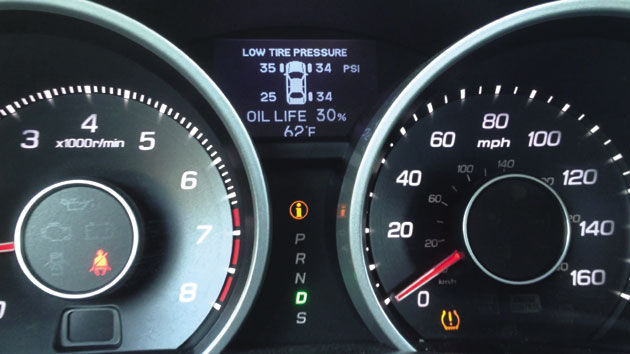 The most famous of them, of course, is the first one - the "horseshoe with arrows". By the way, in the Western world with these indicators there is a similar problem - "what kind of light bulb is this?" - according to surveys, most of the drivers there do not understand their meaning.
The most famous of them, of course, is the first one - the "horseshoe with arrows". By the way, in the Western world with these indicators there is a similar problem - "what kind of light bulb is this?" - according to surveys, most of the drivers there do not understand their meaning.
A good indicator should come on when the ignition is turned on and go out after 3 seconds. If the system has detected a drop in tire pressure, then in order for the indicator to go out, after normalizing the pressure, it is necessary to drive a certain distance at a speed of at least 30 km / h. The indicator is powered directly from the output of the ABS control unit.
The principles of the system allow for the possibility of its incorrect operation (the indicator does not light up at low tire pressure or, conversely, it lights up at normal) under the following conditions:
- tires of non-recommended size are used,
- tires of different sizes or models are installed on different wheels,
- wheels have different grip,
- used spare wheel - "dokatka",
- used wheels with snow chains,
- tire pressure significantly exceeds the nominal,
- the pressure in the tire has dropped sharply due to a puncture,
- the system has not been pre-configured,
- the car is moving on a rough or icy road,
- the vehicle is moving at a speed below 30 km/h,
- for short trips (up to 5 minutes).
If the indicator stays on at normal pressure and in the absence of these conditions, this may indicate a malfunction of the TPMS itself.
4. Presetting.
Adjustment must be carried out after any work related to the replacement of wheels and tires (rims), otherwise the system will not be able to function normally. The adjustment procedure is shown below (preliminary pressure in all four wheels must be correctly adjusted).
Type 1 - models without setting button and with DLC1 connector (early version)
1) Turn on the ignition.
2) Connect the terminals "TS" and "E1" of the diagnostic connector DLC1 under the hood.
3) After 30 seconds, depress and hold the brake pedal until the system indicator flashes 3 times at 2 second intervals.
Type 2 - Set Button Models with DLC1 Connector (Transition)
Note. The installation buttons have several design options - with a pictogram, with an inscription or nothing at all, but differ in their characteristic shape and location - at the bottom of the instrument panel on the driver's side.
The installation buttons have several design options - with a pictogram, with an inscription or nothing at all, but differ in their characteristic shape and location - at the bottom of the instrument panel on the driver's side.
1) Turn on the ignition (the car must be stationary).
2) Connect the terminals "TS" and "E1" of the diagnostic connector DLC1 under the hood.
3) Press and hold the setting button until the system indicator blinks 3 times.
4) After that, in order for the system to save the correct settings, it is necessary to drive a certain distance.
Type 3 - models with setting button and without DLC1 connector (late version)
1) Turn on the ignition (the car must be stationary).
2) Press and hold the setting button until the system indicator blinks 3 times.
3) After that, in order for the system to save the correct settings, it is necessary to drive a certain distance.
5. Self-diagnosis.
The pressure control system, although it operates as part of the ABS, also provides its own small self-diagnosis. Codes on those models where the DLC1 connector was still used are read in the standard Toyota way by the number of indicator flashes when the ignition is on and the "TC" and "E1" terminals are closed. Deleting codes is done in the same way as deleting ABS codes.
21 - Intake air temperature sensor (open/short)
31 - Speed sensor (malfunction)
42 - Stoplight switch (malfunction)
49 - Stop lamp switch (open circuit or short circuit)
It would seem, where does the temperature sensor and brake lights? In fact, the ABS control unit uses ambient temperature data to calculate its effect on tire pressure, and as for brake lights, when the brake is pressed, the system stops monitoring pressure.
Eugene, Moscow
© Legion-Avtodata
Comments and questions
can be directed to
arco@autodata. ru
ru
Service manual Toyota
Posted
Why do you need the optimal pressure in the tires of a vehicle. How to measure it in a Toyota Corolla car. What you need to know about the optimal pressure if the car is not equipped with a manual gearbox, but a CVT.
Optimum tire pressure in Toyota Corolla is an important detail, without which the car will not move smoothly. If the Toyota Corolla tires are filled too high or low with oxygen, an unintentional accident by the driver of the vehicle is possible. That's why it's so important to keep your blood pressure under control.
Content
 7 to 1.8 bar for the front wheels;
7 to 1.8 bar for the front wheels; When inflating tires with oxygen, it is necessary to take into account which gearbox is installed on the machine. With a mechanical box installed, the pressure indicated above will be sufficient for the wheels. If an automatic transmission or, moreover, a variator is installed, then it is recommended to increase the air content of the tire by 0.2 bar for each wheel. Because the automatic transmission and the CVT put the greatest load on the front suspension.
Attention! The smooth movement of the Toyota Corolla and the comfort of the ride depends on the independent front suspension and rear beam from Toyota. And the suspension was made by McPherson, which is famous for its reliable shock absorber struts. Named after the design engineer who made it.
Tire pressure is affected by vehicle load. For example, the above data should be maintained with three people weighing up to 170 kilograms and at speeds up to 160 km/h. If the speed exceeds the indicated one, then increase the air filling of the tires to 0.1 bar for every 10 km / h.
If the speed exceeds the indicated one, then increase the air filling of the tires to 0.1 bar for every 10 km / h.
Experts recommend checking tire inflation regularly. This is done once a month. First of all, a visual inspection should be done. If the wheel sank, then pump it up, having previously looked for punctures or a malfunction of the spool.
When the pressure drops 60 minutes or less after pumping. And the car owner will not be able to see any visual faults at the wheel, it is recommended to take the car to a service center.
Steps for inflation procedure:
This easy procedure is done at home.
Optimum filling of rubber with air influences:

The humidity of the injected air also influences. Friction increases the temperature and increases the amount of water vapor if the air was pumped at high humidity. In this case, nitrogen is suitable for inflating tires. The following information is for avid racing enthusiasts.
Nitrogen is a dry gas. Therefore, rubber inflated with nitrogen will not burst at high speed. Another important factor in favor of nitrogen is the gradual decrease in pressure during a puncture.
The pressure drop in rubber with nitrogen is not noticeable, and it does not drop as sharply as in the case of ordinary gas. In addition, this gas allows you to feel less bumps in the road. Its other best property is its inability to create condensate. Seeping through the tires, it does not damage the metal of the wheels.
However, there are disadvantages to dry gas. This is a high price. And it is almost impossible to find it at ordinary vehicle service stations.